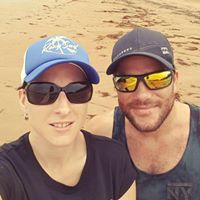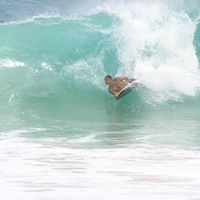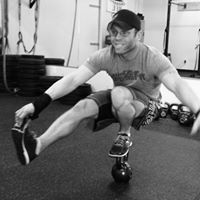John W Hassell
age ~91
from Zephyrhills, FL
- Also known as:
-
- John W Hassel
- John William Hassel
- John Ann Hassel
John Hassell Phones & Addresses
- Zephyrhills, FL
- Litchfield, OH
- Brunswick, OH
- Fort Lauderdale, FL
- Cambridge, OH
Work
-
Company:University of south florida
-
Address:4202 E Fowler Ave Adm, Tampa, FL 33620
-
Phones:8139745465
-
Position:Director of information technology
-
Industries:Colleges, Universities, and Professional Schools
Medicine Doctors

John F. Hassell
view sourceSpecialties:
Family Medicine
Work:
Laurel Family Clinic
1440 Jefferson St, Laurel, MS 39440
6014280577 (phone), 6016497962 (fax)
1440 Jefferson St, Laurel, MS 39440
6014280577 (phone), 6016497962 (fax)
Education:
Medical School
University of Mississippi School of Medicine
Graduated: 1973
University of Mississippi School of Medicine
Graduated: 1973
Procedures:
Allergen Immunotherapy
Arthrocentesis
Continuous EKG
Destruction of Benign/Premalignant Skin Lesions
Electrocardiogram (EKG or ECG)
Pulmonary Function Tests
Sigmoidoscopy
Skin Tags Removal
Vaccine Administration
Wound Care
Arthrocentesis
Continuous EKG
Destruction of Benign/Premalignant Skin Lesions
Electrocardiogram (EKG or ECG)
Pulmonary Function Tests
Sigmoidoscopy
Skin Tags Removal
Vaccine Administration
Wound Care
Conditions:
Allergic Rhinitis
Anemia
Atrial Fibrillation and Atrial Flutter
Bronchial Asthma
Disorders of Lipoid Metabolism
Anemia
Atrial Fibrillation and Atrial Flutter
Bronchial Asthma
Disorders of Lipoid Metabolism
Languages:
English
Description:
Dr. Hassell graduated from the University of Mississippi School of Medicine in 1973. He works in Laurel, MS and specializes in Family Medicine. Dr. Hassell is affiliated with South Central Regional Medical Center.
Wikipedia

J Hassell
view sourceJon Hassell (born March 22, 1937) is an American trumpet player and composer. He is known for his influence in the world music scene and his unusual ...
Name / Title
Company / Classification
Phones & Addresses
Director Of Information Technology
University of South Florida
Colleges, Universities, and Professional Scho...
Colleges, Universities, and Professional Scho...
4202 E Fowler Ave Adm, Tampa, FL 33620
Professor
University of Miami
College/University
College/University
1450 NW 10 Ave, Miami, FL 33136
3052434060
3052434060
Professor
Drug Research Center
Professional Training & Coaching · College/University · Colleges and Universities, Nsk · Library · Medical Doctor's Office · Financial Services · Drug Research · School of Radiation
Professional Training & Coaching · College/University · Colleges and Universities, Nsk · Library · Medical Doctor's Office · Financial Services · Drug Research · School of Radiation
1801 NW 9 Ave STE 300, Miami, FL 33136
1400 NW 10 Ave, Miami, FL 33136
1601 NW 10 Ave, Miami, FL 33136
PO Box 16950, Miami, FL 33101
3055476441, 3052436369, 3052436732, 3055856131
1400 NW 10 Ave, Miami, FL 33136
1601 NW 10 Ave, Miami, FL 33136
PO Box 16950, Miami, FL 33101
3055476441, 3052436369, 3052436732, 3055856131
Resumes

John Hassell
view source
John Hassell
view source
John Neil Hassell
view source
Process Improvement Manager
view sourceWork:
Process Improvement Manager

John Hassell
view source
John Hassell
view source
John Mccoy Hassell
view source
John Hassell
view sourceLicense Records
John B Hassell
Phone:
7273263279
License #:
5211469 - Active
Category:
Health Care
Issued Date:
Aug 13, 2013
Effective Date:
Aug 13, 2013
Expiration Date:
Jul 31, 2017
Type:
Licensed Practical Nurse
Us Patents
-
Combination Of Insulin And Ascorbate To Enhance Wound Healing
view source -
US Patent:7834153, Nov 16, 2010
-
Filed:Jun 5, 2007
-
Appl. No.:11/758080
-
Inventors:Kurt Musselmann - Tampa FL, US
John R. Hassell - Tampa FL, US
Brad Kane - Lakeland FL, US
Bridgette Alexandrou - Tampa FL, US -
Assignee:University of South Florida - Tampa FL
-
International Classification:A61K 36/39
A61K 8/65 -
US Classification:530356, 424 7806
-
Abstract:Provided is a method of stimulating collagen synthesis and proteoglycan (lumican and keratocan) accumulation. Collagenase isolated keratocytes were cultured with or without insulin with or without ascorbate. Insulin stimulates the synthesis of collagen but does not affect the accumulation of lumican and keratocan. Insulin plus ascorbate, however, stimulates the synthesis of collagen and increased the accumulation of these proteoglycans. The accumulation of PGDS, a KSPG that does not interact with collagen, is not affected by ascorbate. Only the collagen made in the presence of ascorbate was pepsin resistant. EDB overrode the effects of ascorbate on pepsin resistance and proteoglycan accumulation.
-
Volume Exclusion Agent To Enhance Formation Of Extracellular Matrix
view source -
US Patent:8623646, Jan 7, 2014
-
Filed:Feb 25, 2011
-
Appl. No.:13/035504
-
Inventors:David E. Birk - Tampa FL, US
John Hassell - Tampa FL, US
Bradley Kane - Lakeland FL, US
La Tia Etheredge - Tampa FL, US -
Assignee:University of South Florida - Tampa FL
Thomas Jefferson University - Philadelphia PA -
International Classification:C12N 5/071
C12N 5/0775
C12N 5/077 -
US Classification:435375, 435325, 435405, 435 11, 435 41, 435 701, 435 703
-
Abstract:A method of enhancing the formation of extracellular matrix in culture. Cells in culture secrete most of the collagen into the media as unprocessed procollagen, i. e. , the cells do not convert procollagen to collagen. In contrast, normal extracellular matrix deposition involves procollagen processing to collagen, fibril assembly and deposition into the cell layer to form a collagenous extracellular matrix. The addition of certain growth factors and the addition of a thin layer of a certain volume exclusion agent on top of the cells dramatically enhances the conversion of procollagen to collagen and will increase the amount of collagen and extracellular matrix associated with the cells. This invention advances bioengineering of connective tissues for medical applications that require an extensive and functional extracellular matrix with high tensile strength such as those in the cornea stroma, skin, tendons, ligaments, articular cartilage and the intervertebral disks.
-
Combination Of Insulin And Ascorbate To Enhance Wound Healing
view source -
US Patent:20110027884, Feb 3, 2011
-
Filed:Oct 14, 2010
-
Appl. No.:12/904489
-
Inventors:Kurt Musselmann - Tampa FL, US
John R. Hassell - Tampa FL, US
Brad Kane - Lakeland FL, US
Bridgette Alexandrou - Tampa FL, US -
Assignee:UNIVERSITY OF SOUTH FLORIDA - Tampa FL
-
International Classification:C12N 5/02
-
US Classification:435375
-
Abstract:Provided is a method of stimulating collagen synthesis and proteoglycan (lumican and keratocan) accumulation. Collagenase isolated keratocytes were cultured with or without insulin with or without ascorbate. Insulin stimulates the synthesis of collagen but does not affect the accumulation of lumican and keratocan. Insulin plus ascorbate, however, stimulates the synthesis of collagen and increased the accumulation of these proteoglycans. The accumulation of PGDS, a KSPG that does not interact with collagen, is not affected by ascorbate. Only the collagen made in the presence of ascorbate was pepsin resistant. EDB overrode the effects of ascorbate on pepsin resistance and proteoglycan accumulation.
-
Roasting Pan
view source -
US Patent:20130112087, May 9, 2013
-
Filed:Nov 9, 2011
-
Appl. No.:13/292454
-
Inventors:JOHN R HASSELL - Tampa FL, US
-
International Classification:A47J 37/04
-
US Classification:99421 H
-
Abstract:A roasting pan is disclosed. The roasting pan may include a dual skewered system providing a stable mounting preventing pivoting and rotating of a mounted subject. The roasting pan may also include raised end walls providing a gap between the bottom surface of the subject and a base wall of the pan. The roasting pan may also include a lower profile side wall providing increased airflow to the sides, ends, and bottom of the subject.

John Hassell
view sourceFriends:
Tim Porter, Rick Hepp, Josh Mitnick, Lisa Rose, Cindy Martin, Vinessa Erminio
John Hassell (John Hassell)

Braeden John Hassell
view sourceFriends:
Edan Jeffs, Kara Lanesbury, Trent Bennett, Mikyla Norman, Emily Carson

John Hassell Whitley
view sourceFriends:
Jane Orr Bass, Caleb Cox, Hunter Barnes, Cassidy Blair Lucas, George White Jr.

John F. Hassell
view source
John Hassell
view sourceFriends:
Gary Zimmerman, Ryan Serrano, Sarah Ludwig, Josh Parrish, Matthew Ingram

John Hassell
view source
John Hassell
view source
John Hassell
view sourceYoutube
Plaxo

John Hassell
view sourceFranklin, TNParata Systems LLC

John Hassell
view sourcePastor at Cottondale UMC Pastor @ Cottondale UMC
Classmates

Lippitt Elementary School...
view sourceGraduates:
Melissa Leonard (1972-1979),
Anne mclellan (1958-1963),
Tom Miner (1966-1970),
John Hassell (1996-2000)
Anne mclellan (1958-1963),
Tom Miner (1966-1970),
John Hassell (1996-2000)

Marianapolis Preparatory ...
view sourceGraduates:
John Hassell (1973-1974),
Ramon Parra (1989-1993),
Holly Poirier (1990-1991),
John Seremet (1953-1957)
Ramon Parra (1989-1993),
Holly Poirier (1990-1991),
John Seremet (1953-1957)

Lake Taylor High School, ...
view sourceGraduates:
Marvette McLean (1990-1994),
John Hassell (1972-1976),
Venita Harris Brown (1974-1978),
Lorenzo Scott (1993-1997),
Michael Kelley (1975-1979)
John Hassell (1972-1976),
Venita Harris Brown (1974-1978),
Lorenzo Scott (1993-1997),
Michael Kelley (1975-1979)

W.T. Cooke Elementary Sch...
view sourceGraduates:
Cheryl Hewitt (1967-1971),
Cindy Mathieson (1967-1970),
Pamela Dillahunty (1981-1986),
Jon Myers (1975-1980),
John leonard Hassell (1946-1947)
Cindy Mathieson (1967-1970),
Pamela Dillahunty (1981-1986),
Jon Myers (1975-1980),
John leonard Hassell (1946-1947)

Greystone Christian High ...
view sourceGraduates:
Valerie Purcell (1984-1988),
Carmen Bell (1970-1974),
John Hassell (1977-1981),
Al Barrows (1976-1980)
Carmen Bell (1970-1974),
John Hassell (1977-1981),
Al Barrows (1976-1980)
Myspace

J Hassell Free Music Tou...
view sourceJon Hassell's official profile including the latest music, albums, songs, music videos and more updates.
Flickr
Googleplus

John Hassell
Work:
Blue Cross and Blue Shield Association - Agent (2007)
Southern Farm Bureau Life Insurance Company - Agent (2007)
NC Farm Bureau - Agent (2007)
Southern Farm Bureau Life Insurance Company - Agent (2007)
NC Farm Bureau - Agent (2007)
Education:
North Carolina State University - Business Management
Tagline:
Mr. Fire

John Hassell
Work:
TWG - Greer Engineering Manager (2013)
Education:
University of Oklahoma - Electrical engineering

John Hassell
Work:
Johnson Monroe Realtors - Real Estate Agent

John Hassell

John Hassell

John Hassell

John Hassell

John Hassell
Get Report for John W Hassell from Zephyrhills, FL, age ~91













